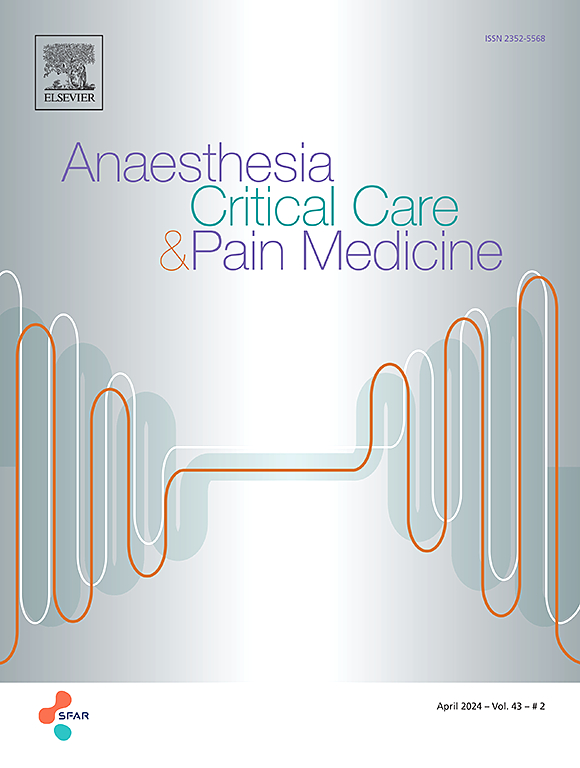Improving paediatric undertriage in a regional trauma network — A registry cohort study
IF 3.7
3区 医学
Q1 ANESTHESIOLOGY
引用次数: 0
Abstract
Background
Trauma remains a leading cause of death in children worldwide. Management in dedicated paediatric trauma centres is beneficial, making accurate prehospital triage crucial. We assessed undertriage in a regional trauma system after implementing a revised paediatric triage rule.
Methods
This retrospective, multicentre registry study included all injured children <15 years admitted to hospitals in the Northern French Alps with suspected major trauma and/or an Abbreviated Injury Scale ≥3. Triage performance was assessed before and after implementation of a revised paediatric triage rule. Multivariate logistic regression identified predictors of undertriage defined as a child with major trauma (need for trauma intervention) not directly transported to the paediatric trauma centre.
Results
All 1524 injured children from January 2009 to December 2020 were included. Of these, 725/1524 (47.6%) presented with major trauma; 593/1524 (38.9%) were referred to a non-paediatric trauma centre, and 220/1524 (15%) were considered undertriaged. Over the years, undertriage decreased from 15% to 9%, after the implementation of a revised triage rule. After adjustment, revised paediatric triage rules decreased undertriage, OR = 0.5; 95% CI: 0.3–0.9; P < 0.02. The multivariate regression model identified the following risk factors of undertriage: children >10 years, two-wheel vehicle road traffic accident, girls after a fall, for boys after a winter ski accident, and infants with severe limb and pelvic injuries.
Conclusion
The implementation of regional revised triage rule contributed to a reduction in the paediatric undertriage rate to 9%; several clinical factors were associated with undertriage.
在区域创伤网络中改善儿科分诊不足-一项登记队列研究。
背景:创伤仍然是全世界儿童死亡的主要原因。在专门的儿科创伤中心进行管理是有益的,这使得准确的院前分诊至关重要。我们在实施修订的儿科分诊规则后评估了区域创伤系统中的分诊不足。方法:这项回顾性、多中心登记研究纳入了所有受伤儿童。结果:从2009年1月至2020年12月,所有1524名受伤儿童被纳入研究。其中,725/1524(47.6%)表现为严重创伤;593/1524(38.9%)被转介到非儿科创伤中心,220/1524(15%)被认为是分类不足。多年来,在修订后的分诊规则实施后,分诊不足率从15%下降到9%。调整后,修订后的儿科分诊规则减少了分诊不足,OR = 0.5;95%置信区间:0.3—-0.9;P 10年,两轮车道路交通事故,女孩摔倒后,男孩冬季滑雪后事故,和婴儿严重肢体和骨盆损伤。结论:区域修订分诊规则的实施有助于将儿科分诊不足率降至9%;几个临床因素与分流不足有关。
本文章由计算机程序翻译,如有差异,请以英文原文为准。
求助全文
约1分钟内获得全文
求助全文
来源期刊

Anaesthesia Critical Care & Pain Medicine
ANESTHESIOLOGY-
CiteScore
6.70
自引率
5.50%
发文量
150
审稿时长
18 days
期刊介绍:
Anaesthesia, Critical Care & Pain Medicine (formerly Annales Françaises d''Anesthésie et de Réanimation) publishes in English the highest quality original material, both scientific and clinical, on all aspects of anaesthesia, critical care & pain medicine.
 求助内容:
求助内容: 应助结果提醒方式:
应助结果提醒方式:


